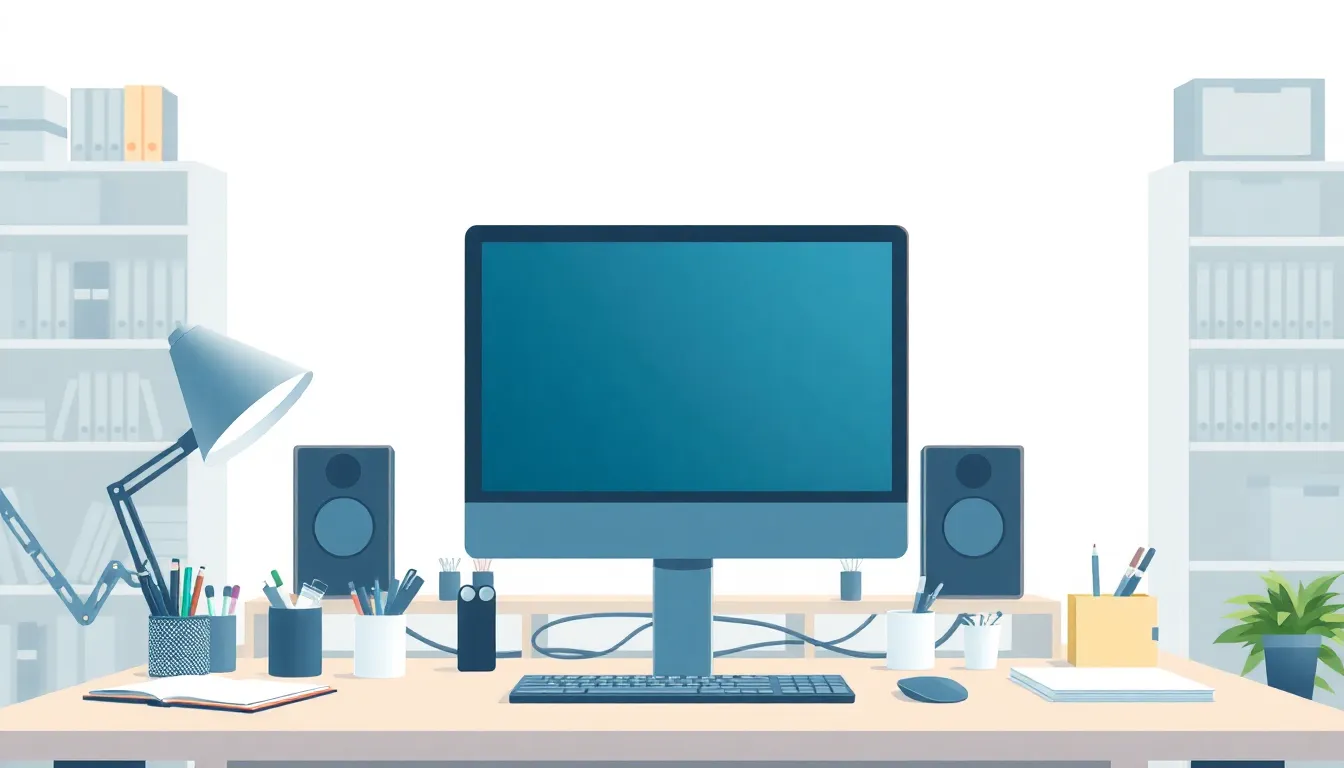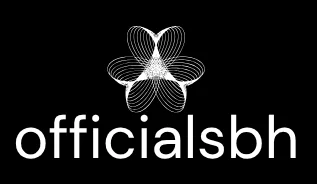In a world where the line between work and home blurs faster than a coffee stain on a white shirt, home office organization becomes essential. Picture this: a cluttered desk, papers flying like confetti, and that elusive pen hiding in the abyss of chaos. It’s a scene straight out of a sitcom, but the punchline isn’t funny when deadlines loom.
Table of Contents
ToggleImportance Of Home Office Organization
A well-organized home office boosts productivity and enhances focus. Chaos in the workspace often leads to distractions, making it difficult to meet deadlines or perform optimally. Cluttered desks, misplaced documents, and tangled cables create an unproductive environment.
Streamlined organization saves time. Finding needed items becomes easier when everything has its place. Individuals waste an average of 30 minutes daily searching for misplaced items, which can add up to significant lost productivity over a year.
Mental clarity stems from a tidy workspace. A clean environment can reduce stress and anxiety, leading to improved concentration. Individuals report feeling less overwhelmed when their workspaces are orderly, allowing for clear thinking.
Ergonomics play a vital role. An organized space encourages proper posture and effective workflows. Adjustable furniture and designated areas for specific tasks can contribute to physical comfort and long-term health.
Time management benefits from organization. Employing systems like digital calendars, checklists, and prioritization methods allows individuals to track tasks efficiently. The use of productivity tools leads to more effective work habits and increased accountability.
Collaboration improves with organized spaces. When sharing a home office, clear boundaries and designated areas enhance communication. Workflow efficiency increases when everyone understands their roles and where supplies are located.
Establishing routines aids in maintaining organization. Consistent decluttering and regular audits of workspace productivity keep environments conducive to work. Setting aside time each week to assess and adjust organization helps sustain an effective home office.
Effective home office organization ultimately leads to a better work-life balance. An organized space allows for a clear separation between work and personal life, enhancing overall well-being. Improved organization fosters a more satisfying and productive remote work experience.
Essential Elements Of Home Office Organization

Creating an organized home office involves key elements that enhance productivity. Effective desk setup and efficient storage solutions play significant roles in this process.
Desk Setup
A well-arranged desk fosters an atmosphere conducive to productivity. Position monitors at eye level, ensuring comfort while working. Organize frequently used tools like pens and notebooks within arm’s reach to minimize distractions. Consider the use of cable management solutions to keep cords tidy. Customize the workspace with personal items, balancing inspiration and professionalism. Lighting choices are equally important, as natural light can reduce eye strain and improve mood.
Storage Solutions
Effective storage solutions reclaim valuable workspace while keeping materials accessible. Use shelves for books and documents to create vertical storage, maximizing space efficiency. Incorporate drawer organizers to categorize supplies, preventing chaos from accumulating. Consider multifunctional furniture, such as desks with built-in storage, to streamline the area. Utilize labeled bins or containers for important documents, promoting quick retrieval. Regularly assess storage areas to maintain organization and avoid clutter over time.
Tips For Effective Home Office Organization
Effective home office organization increases productivity and reduces stress. Implementing a few strategies can transform any workspace into an efficient environment.
Decluttering Techniques
Regular decluttering enhances focus and efficiency. Start by reserving a few minutes each day for sorting through papers and items. Establish specific areas for essential documents, tools, and supplies. Use labeled bins to categorize items, making retrieval quick and easy. Discard items that no longer serve a purpose, reducing clutter and freeing up space. Schedule quarterly audits to reassess which items remain necessary, ensuring a streamlined workspace. Awareness of frequently used tools also minimizes time spent searching for them.
Creating Efficient Workflows
Optimizing workflows promotes a seamless work experience. Place tools and materials in close proximity to the main workstation. Prioritize digital tools, like task management apps, to keep tasks visible and manageable. Organizing files on the computer and in physical space by project improves access and collaboration. Assess daily routines to identify time-consuming tasks and streamline processes to save valuable minutes. Establish consistent breaks to recharge, maintaining productivity and mental clarity throughout the day. Thoughtful arrangement of the workspace contributes to effective workflows and overall satisfaction.
Tools And Resources For Home Office Organization
Organizing a home office involves utilizing various tools and resources that enhance productivity and efficiency.
Organizational Apps
Numerous organizational apps simplify task management and streamline workflows. Tools like Trello and Asana aid in project tracking, enabling users to visualize progress. Microsoft OneNote helps in note-taking, storing ideas, and organizing information in one place. Google Drive facilitates file sharing and collaboration, allowing team members to access important documents from anywhere. Additional apps, such as Evernote, foster effective document organization and retrieval. Implementing these digital solutions minimizes paperwork clutter, promotes effective time management, and enhances task prioritization.
Furniture Recommendations
Selecting the right furniture significantly impacts workspace organization and comfort. A desk with ample surface area accommodates computers and essential tools, reducing clutter. Ergonomic chairs support posture, preventing discomfort during long working hours. Adjustable standing desks enable users to switch positions, contributing to overall health. Storage solutions, like modular shelving systems, maximize available space and keep items organized. Several organizers and bins make it easy to categorize and access supplies. Each piece of furniture should enhance productivity while enhancing the overall aesthetic of the home office environment.
Common Mistakes To Avoid
Disorganization leads to wasted time and frustration. Many individuals overlook the importance of daily decluttering, which often results in accumulated messes. Ignoring digital organization also contributes to inefficiency, as unfiled documents can create unnecessary confusion. Individuals frequently tend to mix work and personal items, making it challenging to maintain focus during work hours.
Neglecting ergonomic considerations hampers productivity, as uncomfortable setups can cause physical strain. Utilizing inadequate lighting diminishes concentration, often leading to eye fatigue and reduced efficiency. Failing to establish clear boundaries in shared workspaces can disrupt collaboration, creating communication breakdowns.
Lack of a designated workspace results in distractions, blurring the lines between personal and professional life. Overloading desks with unnecessary items not only clutters the space but also hinders effective workflows. Storing materials out of reach can disrupt flow, forcing individuals to waste time searching for essential tools.
Ignoring the use of technology for task management leads to disorganized workloads. Abandoning project-focused filing systems means individuals miss out on streamlined document retrieval. Overscheduling tasks without breaks may result in burnout, urging the importance of a balanced approach for sustained productivity.
Prioritizing organization boosts efficiency. A commitment to regularly assessing workspace setup fosters long-term success. Establishing a routine for decluttering encourages a more focused atmosphere, ultimately leading to a productive and satisfying work experience.
A well-organized home office is essential for maximizing productivity and maintaining a healthy work-life balance. By implementing effective organization strategies individuals can create a workspace that fosters focus and efficiency. Regular decluttering and thoughtful arrangements not only reduce stress but also enhance overall well-being.
Utilizing the right tools and resources further streamlines workflows while ergonomic setups promote physical comfort. With a little effort and consistency anyone can transform their home office into a productive haven. Embracing these organizational practices will lead to a more satisfying remote work experience and ultimately pave the way for greater success.



